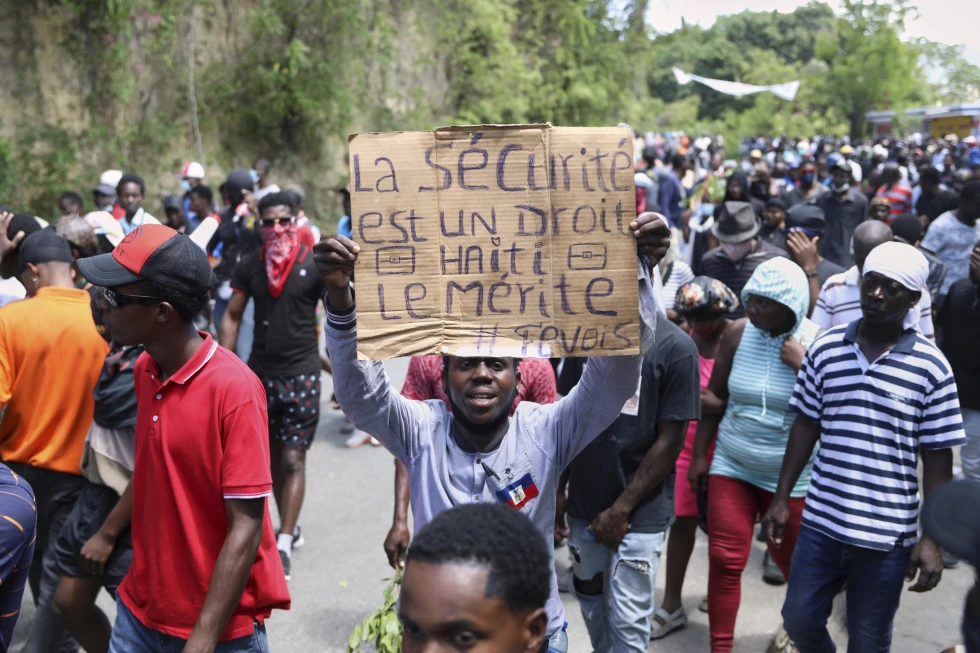A newly released United Nations report has revealed the staggering toll of coordinated gang violence in Haiti’s capital, Port-au-Prince, while sharply criticizing the Haitian government for its delayed and disorganized response. According to the UN political mission in Haiti, known as BINUH, at least 262 people were killed in gang-led attacks between January 27 and March 27 in the neighborhoods of Kenscoff and Carrefour.

The report outlined how a January attack in Kenscoff unfolded, exposing deep flaws in the country’s emergency response system. It took more than five hours for Haiti’s military, national police, and a UN-backed international security mission led by Kenyan forces to respond—despite advance warnings.
BINUH suggested the delay pointed to a serious disconnect between the Haitian National Police and the central government. The mission said, “The sequence of events in Kenscoff appears to indicate that the security forces did not initially take adequate measures to prevent the first attacks, nor to ensure the rapid deployment of specialized police units, despite reports of an imminent threat posed by gangs.”
In the initial wave of violence, at least 31 civilians were killed, 27 injured, and more than 70 homes were burned to the ground before security forces finally arrived. The attackers were eventually repelled, with authorities killing at least 23 gang members.
Just hours later, a separate attack in Carrefour left at least 30 more civilians dead, adding to the growing death toll across the metro area. The report described widespread execution-style killings, with victims shot inside their homes or gunned down as they fled through nearby roads and trails.
Between late January and late March, a total of 262 people were confirmed dead, 66 injured, and over 190 homes torched. Among the victims were 147 suspected gang members and a one-month-old infant who was thrown into a fire. More than 3,000 residents were left homeless. The report also documented the rape of at least seven women and girls, including a 41-year-old breastfeeding mother.
The UN report also highlighted the gangs’ advanced planning. Weapons and ammunition were smuggled into the area inside large plastic drums, typically used for water and fuel, and transported undetected on donkeys through surrounding hills. The attackers exhibited “extreme brutality,” the UN said, intentionally creating fear by executing men, women, and children in plain view.
Analysts say the attacks reflect Haiti’s rapidly unraveling governance. Diego Da Rin, an analyst with the International Crisis Group, said the violence once again revealed the fracture between Haiti’s prime minister and police leadership, along with the police force’s failure to process and act on critical intelligence.
The Haitian National Police has not publicly responded to the report. However, the agency has faced widespread criticism for being under-resourced and ineffective against powerful, well-armed gangs.
Amid the chaos, journalists have also become targets. Two reporters have gone missing in recent days, further inflaming concerns over press freedom and democratic backsliding.
Jean Christophe Collègue, a former correspondent for Voice of America, has disappeared after his home was set on fire. Separately, a viral video showed Radio Ginen journalist Israël Roger Claudy and his brother being abducted by armed gangs. The Association of Haitian Journalists denounced the incidents, calling them direct attacks on democracy.
Port-au-Prince, once the political and cultural heart of Haiti, is now estimated to be 85 percent controlled by gangs. Jake Johnston, a senior researcher at the Center for Economic and Policy Research, said, “For the vast majority, that threshold was passed long ago. Many now believe the city has completely fallen.”
On April 2, thousands of residents took to the streets in a protest march aimed at the prime minister’s office and the transitional presidential council. The demonstrators, demanding immediate action to end gang violence, were met with gunfire and tear gas.
“What it really shows you is the level of frustration,” Johnston said. “Taking to the streets to protest in this context is obviously not a safe thing to do, but people are willing to risk their lives.”
The much-anticipated international security mission led by Kenyan police is currently operating at less than half its intended capacity. Out of the original plan for 2,500 personnel, only 40 percent have been deployed due to funding and logistical constraints.
Johnston added, “What’s clear is that sitting around and waiting for more external help in doing this is not a viable strategy.”



